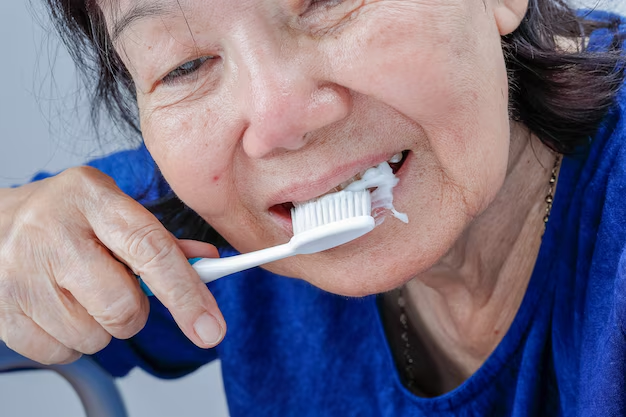Effective Ways to Remove Denture Glue: A Comprehensive Guide
Denture adhesive can be a lifesaver for denture wearers, providing security and confidence throughout the day. However, removing this glue can sometimes be a challenging task. If you've ever found yourself wrestling with stubborn adhesive, you're not alone. Let's delve into the most effective methods for removing denture glue, ensuring your dentures—and your gums—remain in great shape.
Understanding Denture Glue and Its Role
Before diving into the removal methods, it's essential to understand why denture glue is used in the first place. Denture adhesives help keep dentures in position, prevent slipping, and provide added comfort to the wearer. These adhesives come in various forms, including pastes, powders, and strips, each with its own adhesive strengths and removal difficulties.
Why Adhesive Removal Matters
Properly cleaning denture glue isn’t just about comfort; it’s also essential for oral health. Residue can harbor bacteria, leading to bad breath and potential gum issues. Thus, knowing how to effectively remove adhesive is crucial for maintaining oral hygiene.
Methods for Removing Denture Glue
Here are several effective strategies for removing denture adhesive:
1. Rinsing with Warm Water
Warm water can soften denture adhesive, making it easier to remove. Swish a mouthful of it around for a few minutes to loosen the glue. This initial step can often make subsequent cleaning easier.
Pro Tip: Adding a bit of salt to the water can enhance its adhesive-loosening capabilities and help in maintaining gum health.
2. Using a Soft-Bristled Toothbrush
A soft-bristled toothbrush can gently scrub away remaining adhesive. Be gentle to avoid irritating the gums and ensure you reach all areas where the adhesive might still be clinging.
3. Employing Denture-Specific Solutions
There are products specifically designed to help in the removal of denture glue. These solutions can effectively break down the adhesive without damaging the denture material or causing irritation to the gums.
Key Advice: Always check the product label to ensure it’s suitable for your type of denture.
4. Olive Oil or Mineral Oil
A small amount of olive or mineral oil can be used to rub off stubborn adhesive. These oils are safe for gums and can gently dissolve glue, allowing for easier removal.
Reminder: Use the oil sparingly to avoid an unpleasant oily texture in the mouth.
5. Dedicated Denture Brushes and Cleaners
Some cleaning tools are designed specifically for dentures, providing gentle yet effective cleaning. These often have soft bristles and ergonomically designed grips for easy usage.
6. Professional Cleaning
For those struggling with persistent adhesive, seeking professional assistance is an alternative. Dental professionals can safely clean dentures and offer personalized advice.
Denture Glue Removal: Quick Tips at a Glance 📝
- Warm Water Rinse: Loosens adhesive with ease. 🌊
- Soft Brush Cleaning: Gentle scrubbing for delicate gums. 🦷
- Denture Solutions: Utilize specialized products for effective results. 🧴
- Natural Oils: Olive and mineral oils as natural dissolvers. 🌿
- Dedicated Tools: Use tools designed specifically for dentures. 🛠️
- Professional Help: When in doubt, consult your dentist. 🦷
Common Mistakes to Avoid
While removing denture adhesive seems straightforward, there are common pitfalls to be wary of:
Using Abrasive Materials
Avoid using harsh materials like metal tools or stiff-bristled brushes as they can damage dentures and irritate gums.
Inadequate Cleaning
Ensure all adhesive is removed daily to prevent bacterial buildup, which could lead to further oral health issues.
Over-reliance on Products
While products can help, overusing chemical-based solutions can wear down denture materials over time.
Proper Denture Care Routine
Incorporate these steps into your daily denture care routine for optimal results:
- Daily Cleaning: Clean dentures thoroughly every day. Remove, rinse, and brush them to get rid of food particles and adhesive residue.
- Soak Overnight: Give your dentures a break by soaking them in a denture-cleaning solution overnight. This keeps them fresh and hygienic.
- Regular Checkups: Visit your dentist regularly to ensure your dentures are still fitting well and healthily supporting your gums.
The Role of a Dental Professional
Regular check-ups with your dentist can ensure your dentures fit correctly, reducing the need for excessive adhesive use and simplifying the removal process.
How to Prepare for Successful Denture Removal
Success in removing denture adhesive often starts with proper preparation and use:
Mindful Application
Using the right amount of adhesive makes removal easier. Follow the instructions regarding quantity, ensuring you don’t over-apply.
Choosing the Right Adhesive
Not all adhesives are created equal. Consult with your dentist to choose one that suits your lifestyle and provides adequate hold.
Monitoring Wear and Tear
Over time, dentures degrade and may require realignment or replacement. Keeping tabs on their condition can prevent issues related to excessive adhesive use.
Key Takeaways for Denture Adhesive Management 👍
- Mindful Usage: Apply adhesive sparingly and as directed. 📏
- Routine Maintenance: Clean dentures daily to prevent build-up. 🧼
- Professional Guidance: Seek expert advice for personalized care. 🩺
- Regular Adjustments: Keep dentures in prime condition with checkups. 🔧
Removing denture glue doesn't have to be a daunting task. By using the right techniques and maintaining a consistent care routine, you can ensure both your dentures and gums remain healthy and comfortable. Remember, when in doubt, your dentist is your best resource for advice and solutions tailored to your specific needs.

Related Topics
- a Bridge For Teeth
- a Denture Plan That You Can Pay Monthly Payments
- Are Dentures Covered By Insurance
- Are Dentures Covered By Medicare
- Are Dentures Uncomfortable
- Are Permanent Dentures Thinner Than Temporary Dentures
- Are Snap-in Dentures Covered By Insurance
- Are There Plastic Dental Partials With Metal
- Can a Tooth Be Added To a Valplast Denture
- Can Dogs Get Dentures